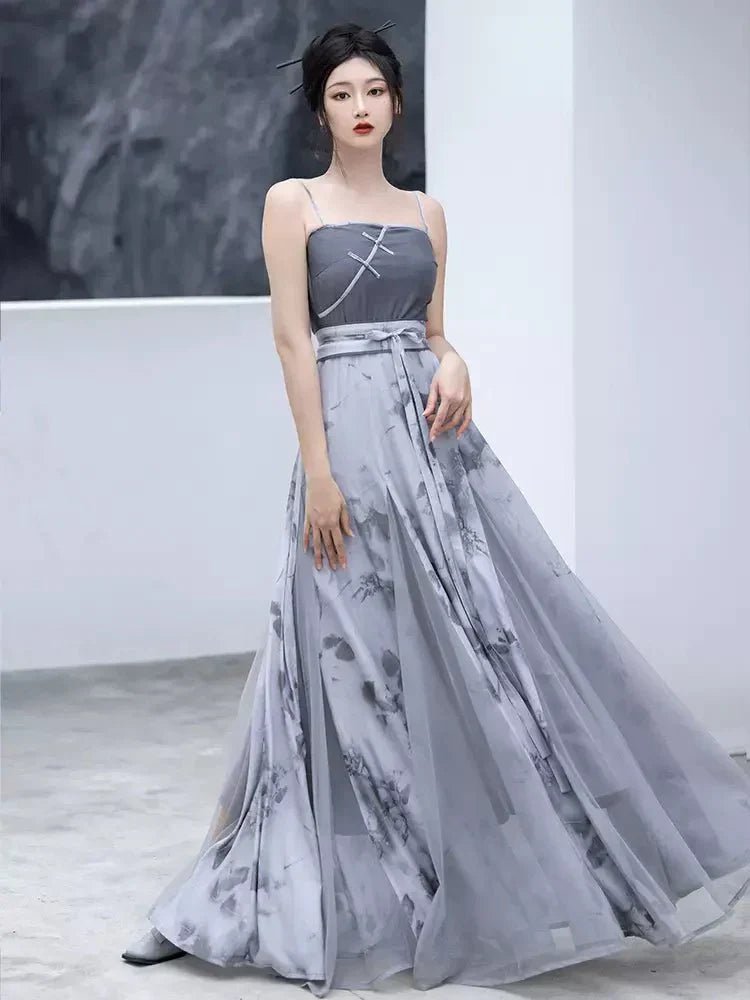Hanfu, the traditional attire of the Han Chinese people, has experienced a remarkable resurgence in recent years. From its ancient origins to its modern reinterpretations, Hanfu embodies the cultural richness of China while adapting to contemporary aesthetics. This guide delves into the history, traditional styles, and evolving trends of Hanfu, offering insights into its enduring legacy and modern appeal.
1. The History of Hanfu: A Journey Through Millennia
Hanfu’s history spans over 3,000 years, tracing back to the Shang Dynasty (c. 1600–1046 BCE). Archaeological evidence reveals early Hanfu designs, such as the yi (a narrow-cuffed tunic) and chang (an ankle-length skirt), paired with a bixi (decorative fabric panel)511. By the Zhou Dynasty (1046–256 BCE), Hanfu evolved into looser garments with wide sleeves and jade ornaments, symbolizing social hierarchy through design details like sleeve width and embroidery5.
During the Han Dynasty (202 BCE–220 CE), the shenyi (深衣), a one-piece robe combining tunic and skirt, became popular. This design emphasized Confucian ideals of modesty and harmony11. The Tang Dynasty (618–907 CE) marked a golden age for Hanfu, introducing vibrant colors and styles like the qixiong ruqun (high-waisted draped dress), which remains iconic today59.
However, Hanfu faced decline during the Qing Dynasty (1644–1912) when Manchu rulers imposed their clothing styles. Despite this suppression, Hanfu’s cultural significance endured, and its revival in the 21st century reflects a renewed pride in Chinese heritage56.
2. Traditional Hanfu Styles: A Dynasty-by-Dynasty Breakdown
Hanfu’s diversity lies in its dynastic evolution. Below are key styles that defined each era:
Shang & Zhou Dynasties
-
Yi and Chang: Basic tunic-and-skirt combinations, often adorned with geometric patterns.
-
Jiaoling Youren: Cross-collar robes wrapped right-over-left, a design still seen in modern Hanfu511.
Han Dynasty
-
Shenyi: A seamless, full-body robe symbolizing unity and simplicity.
-
Quju & Zhiju: Curved-hem and straight-hem robes, differentiated by their tailoring5.
Tang Dynasty
-
Ruqun: A two-piece set with a blouse and high-waisted skirt, often paired with a pi (long scarf).
-
Banbi: A half-sleeved jacket worn over dresses911.
Ming Dynasty
-
Aoqun: A jacket-and-skirt ensemble with intricate embroidery.
-
Yesa: A horseback-riding-friendly robe with pleated skirts5.
These styles highlight Hanfu’s adaptability to social, political, and aesthetic shifts, while retaining core elements like cross-collars and flowing silhouettes611.
3. Modern Hanfu Fashion: Blending Tradition with Innovation
The 21st-century Hanfu revival is driven by youth culture, globalization, and digital platforms. Key trends include:
Neo-Hanfu and Daily Wear
Modern designers are reimagining Hanfu for practicality. For instance, horse-faced skirts (mamianqun), once ceremonial attire, now feature lightweight fabrics like chiffon for everyday use14. Brands like Huaibian Xiaozhu blend historical accuracy with contemporary comfort, using machine-washable materials without sacrificing traditional motifs14.
Hanfu in Pop Culture
TV dramas like The Story of Minglan and social media influencers have propelled Hanfu into mainstream fashion. On Douyin (TikTok), sales of horse-faced skirts surged by 841% in 2024, reflecting its viral appeal14.
Global Influence
Hanfu enthusiasts worldwide are showcasing its beauty at events like the Global Hanfu Model Contest in Shanghai and cultural festivals in London812. International designers are also incorporating Hanfu elements, such as wide sleeves and silk brocade, into haute couture14.
4. Cultural Significance: More Than Clothing
Hanfu is a symbol of cultural identity and pride. For young Chinese, wearing Hanfu is a way to reconnect with their roots. As lyricist Fang Wenshan noted, “Hanfu is the perfect bridge for young people to connect with Chinese culture”6.
The term tongpao (同袍, “those who wear the same robe”) embodies the community spirit among enthusiasts, who organize events like Hanfu Culture Week to celebrate shared heritage614. Academics like Professor Zhou Shuang emphasize Hanfu’s philosophical roots, such as its loose fit representing harmony with nature14.
5. How to Wear Hanfu Today: Styling Tips
-
For Traditional Events: Opt for Ming-style aoqun with intricate embroidery for festivals like Lunar New Year.
-
Casual Outings: Pair a Tang-style ruqun with minimalist accessories for a modern twist.
-
International Fusion: Combine a horse-faced skirt with a tailored blazer for a cross-cultural look614.
Conclusion: Hanfu as a Living Tradition
From ancient dynasties to TikTok trends, Hanfu’s journey reflects China’s cultural resilience. Whether through meticulously restored designs or bold modern hybrids, Hanfu continues to captivate wearers and observers alike. As designer Sanmu of INGKO noted, “It’s about celebrating our ethnic culture while embracing the future”14.
For those eager to explore Hanfu, start with a simple ruqun or visit online communities to join the global movement. As this guide shows, Hanfu is not just clothing—it’s a story woven through time, waiting to be worn.
By weaving history with modernity, Hanfu offers endless possibilities—a testament to its timeless allure.





